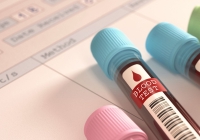
Employee Benefits & Compensation Articles
Retaining and attracting the best employees means offering more than competitive salaries. Thoughtful and useful benefits packages set up employees and your business for success. Just make sure you build communications systems that make it easy for your employees to sign up.
A survey of American workers earlier this year showed that two in three were at least somewhat confident they would have enough money to retire comfortably, but only 17% said they were very confident they would be able to do so.
Starting next year, Medicare Advantage plans will be able to add restrictions on expensive, injectable drugs administered by doctors to treat cancer, rheumatoid arthritis, macular degeneration and other serious diseases.
Manufacturing, construction, service, hospitality, and other blue-collar industries are among those with large workforces unlikely to spend the workday sitting at a desk with ready access to email and for whom scheduling large group meetings to present employee benefits offerings and open enrollment procedures is next to impossible.
This isn't just a time to change your health insurance (but checking into your options for switching policies is always smart). Open enrollment gives you a chance to change other insurance coverage or opt-in to programs your employer offers that can save you more money.
Simply having a health insurance plan available to your employees is no longer enough to ensure that they actually enroll. This can be incredibly frustrating for any business, as healthcare is part of any reputable company’s employee benefits package.
Thanks to the efforts of plan sponsors, advisors, HR, and executives, companies can improve their 401(k) plans. Here are 5 industries where efforts succeeded.
For employers, both large and small, being knowledgeable about regional health challenges —such as high costs or poor quality — can give them an edge when it comes to crafting the best benefit policies to attract and retain talent.
General Motors on Monday inked a deal with Detroit-based hospital system Henry Ford Health System to provide a new direct-to-employer healthcare option to 24,000 of its salaried employees and their dependents in Southeast Michigan.
While women overall caught up on April 10 this year, black women were still working—until August 7—just to catch up.
Every HR professional understands that employee benefits are one of the biggest reasons employees choose one job over another, and your company provides great benefits—a quality health insurance plan, for example. In fact,
There’s no question worker engagement in benefits remains a struggle for employers. As the market expands and options increase, employees are shutting down when it comes to benefit understanding and usage.
You know what Decision Support Tools can do for your organization and your HR department, but from an employee’s perspective, how do these complex digital tools help them?
Decision-support tools are great at helping employees find the right health insurance and other benefits options for them, but how do they work? Different tools use different algorithms to determine the best options for their users. Understand how they work, and you’ll know what to expect from yours.
Open enrollment and choosing the right health insurance options can be one of the most stressful and daunting tasks for many employees. Open enrollment happens every year, and some employees still do not understand the process and experience lots of confusion during the process.
“Learning is the only thing a mind never exhausts, never fears, and never regrets.” Leonardo da Vinci
One of the biggest trends in HR today is the development of employee resource groups (ERGs). ERGs give employees the opportunity to share their passions and talents with their coworkers.
The law ushers in bold patient protections and blockbuster realignment of claims-handling processes.
According to the 2018 Millennial Benefit Trends Report, the millennial participants were asked to rank the benefit categories from most to least important. Number one on the list is “Health Insurance,” which 63.64% rated as “Extremely Important”.
Professional Employer Organizations (PEOs), which provide outsourced HR services such as payroll, benefits, workers’ compensation and 401(K) administration, can be a terrific option for smaller companies without an in-house human resources team. But how do you know whether you’ve outgrown that solution?
Many employers are nudging their employees to be savvy health insurance consumers through strategies like expanded choice of plan options, defined contribution funding, HSA education and cost transparency tools.






















